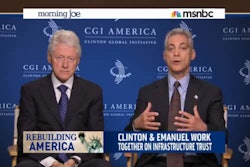
Of those deficient bridges, some are structurally deficient and others are functionally obsolete. Despite these figures, the number of deficient bridges has decreased since 2002, while the number of bridges has increased.
GAO’s testimony pointed out that it is important to understand the impact of federal investment in bridges, but that the impact is difficult to measure.
GAO added that the U.S. Department of Transportation (USDOT) has progressed with “clarifying federal goals and linking federal transportation programs… to performance” with the implementation of Moving Ahead for Progress in the 21st Century Act (MAP-21), which included provisions that added National Highway Performance Program funds and required the Secretary of Transportation to consult with states to establish performance measures for bridge conditions.
However, GAO said “Congress and the administration need to agree on a long-term plan for funding surface transportation.” The agency added that continuing to fund the Highway Trust Fund with the general fund will not sustain necessary transportation projects.
GAO’s testimony comes after the collapse of the Interstate 5 bridge into the Skagit River in Washington State. The collapse highlights a national need for increased infrastructure funding and, according to GAO, “underscores the importance of maintaining the nation’s infrastructure and the economic impact that a bridge failure can have on a region.”
In its testimony, GAO made no new recommendations. Five years ago, the agency recommended that “the Secretary of Transportation work with Congress to identify and define national goals for the federal bridge program, develop and implement performance measures, identify and evaluate best tools and practices, and review and evaluate funding mechanisms to align funding with performance.” GAO closed this recommendation due to the provisions outlined in MAP-21.
For more information about deficient bridges, check out our Better Bridges 2012 Bridge Inventory.














